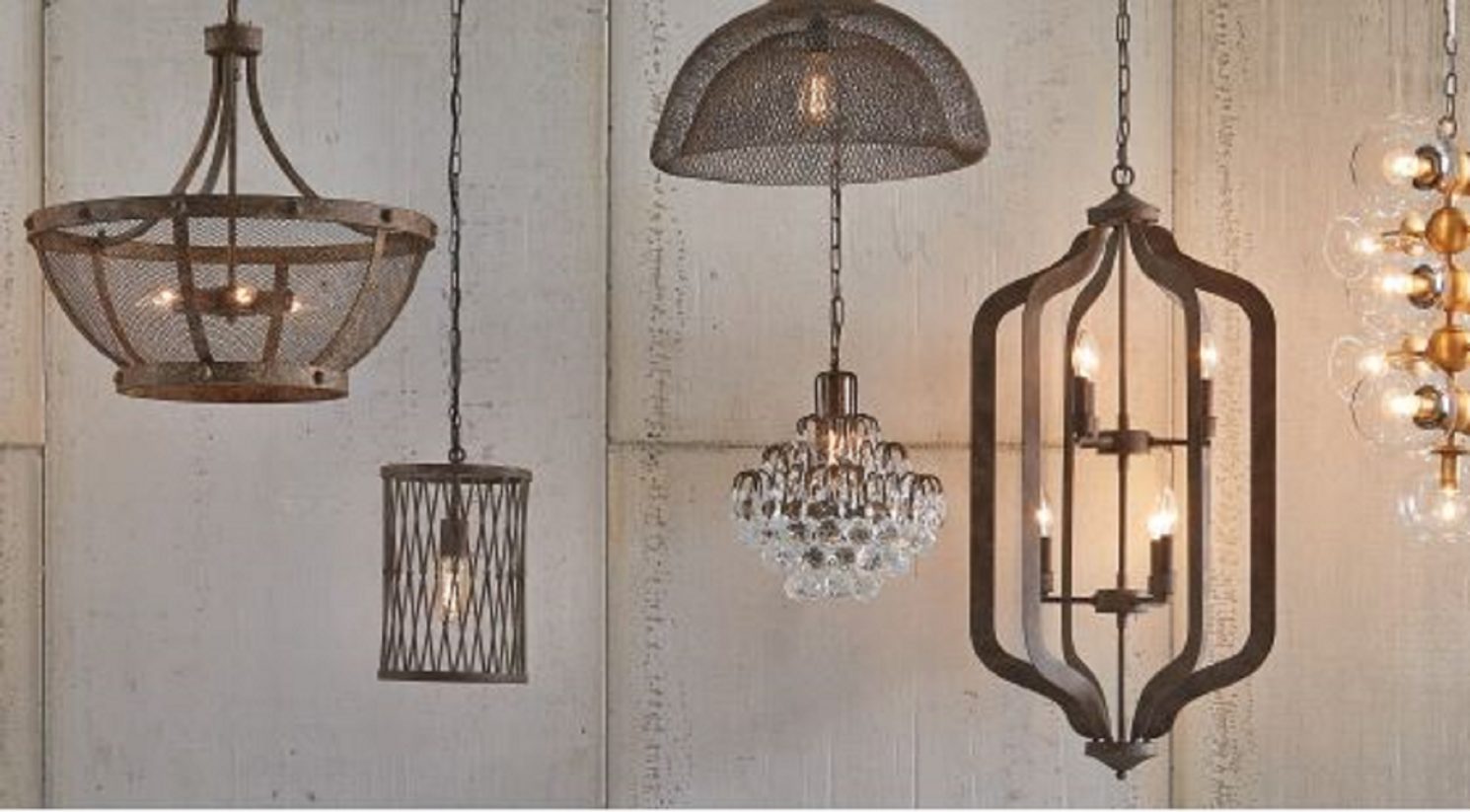Tips For Finding The Perfect Chandelier

Think of Simplifying Chandelier Selections as your go-to quick reference guide on how to best scale lighting to compliment the overall design of the space.
First, Know the Formulas
A chandelier must be proportionate to the room both in diameter (or width) and vertically (height).
Here is how to calculate both:
Chandelier Diameter-
Width of room in feet + length of room in feet = diameter/width of chandelier in inches.
For example, if your room is 12 feet long by 14 feet wide then a 26-inch diameter chandelier is proportionate (12+14=26).
Chandelier Height-
Room height in feet times a factor of 2.5 to 3.
This formula gives you a solid range in inches for how tall the chandelier should be so that it is proportionate to the space.
Here are a couple of examples:
For an 8-foot ceiling, multiply 8 by 2.5 and by 3. The result is that your chandelier should be 20 to 24 inches from its top (excluding the chain or down rods) to its bottom (8 x 2.5 = 20”; 8 x 3 = 24”).
For a 10-foot ceiling, multiply 10 x 2.5 = 25 and 10 x 3 = 30. The range of 25 to 30 inches is the height of the fixture you should look for in this case.
Note…the taller the room height, the more you should use the high side of the formula.
Both formulas are a minimum size guide. You certainly can go larger in size, but not smaller, in order to stay proportionate to the room size.
Room-Centered Chandeliers
Now, let’s discuss the scenario of a light fixture that will be centered on a 
What if approximating the seating area dimensions is tricky? Or, you want to double-check your figures? In these cases, take the distance from the fixture on center to the two closest walls, add the distances together and then double it for the approximate chandelier diameter in inches.
For example, if the center of your seating area is 8 feet from one wall and 6 feet from the other, add 8 + 6 = 14. Now multiply 14 x 2 = 28. In this case, a 28-inch-diameter fixture would be a good fit.
This is an open space so you do need to be concerned about how high to hang the chandelier so that no one hits their head. A standard of 7 feet above the floor works for most spaces with a ceiling height higher than 8 feet. You can go as low as 6 feet, 6 inches for a standard 8 foot ceiling.
Now, you’re probably doing some math and have figured out that hanging a fixture 6 feet, 6 inches above the floor won’t work for an 8-foot ceiling if the fixture’s height is over 18 inches. Focus on the width of your chandelier in this case, throwing out the 2.5 to 3 times height rule.
Those of you with very tall ceilings should hang a chandelier 8 feet above the floor. Add one foot for ceilings over 12 feet tall for a total of 9 feet above the floor. Another way to fill the height well is to hang a chandelier with varying heights or tiers. The taller tiers fill the space and the low tiers give the space a more intimate feel.
Entryway

Dining Rooms
There are special considerations to take into account for a chandelier that hangs over a dining table. Hanging the chandelier above the table at the right height is critical. Too low and your guests are hitting their heads, too high and you lose the intimacy of the space. A standard hanging height is 30 to 34 inches from the bottom of the chandelier to the top of the table. The length and width of the chandelier are also important. The chandelier should not extend any wider than the table.
A good rule of thumb for choosing the correct length of a chandelier is one-
Finally, make sure the chandelier compliments or enhances the design of the space. For example, a room wallpapered in a busy pattern can take a chandelier with intricate detailing. In fact, it will better balance the space. Conversely, a modest chandelier works better in a minimalistic or very neutral space.
Trends

Strike gold with a trend of warm-toned metallic chandeliers. The softer gold hues are more modest than a true gold. Hang a chandelier in muted gold, antique gold, or one with a brass finish to bring a timeless sophistication to the space. Another popular trend is to find a golden metallic chandelier that is similar in tone to metal accessories or hardware already placed in the room.
Chandeliers come in all shapes and sizes these days. Take advantage of a trend that makes the light the focal point or piece of art in the space. This trend works especially well in smaller spaces where the scale is kept in proportion but the fixture brings in the wow factor.
Going a step further, you have the shape and size, but you need to bring in texture and maybe even some color to finish the look. Chandeliers are now made from a plethora of materials and hues. Find one with the perfect inviting texture and color. See how the chandelier transforms the space, becoming the pleasantly unexpected feature.
Finally, one more trend finding its way into design is one where a 
It is my hope that this quick lighting lesson on Simplifying Chandelier Selections helps you to better choose the perfect chandelier for your space. Remember that lighting is the eye candy for your room. Make it spectacular!
Click here for more blog news. Check out these lighting providers: Gabby, Palecek, and Forty West.

